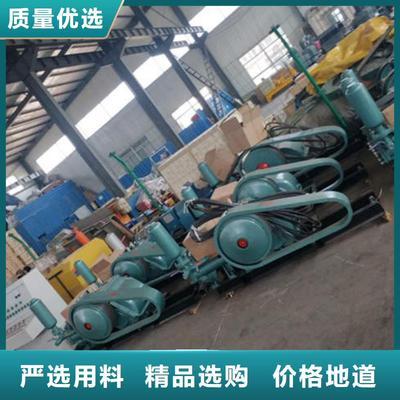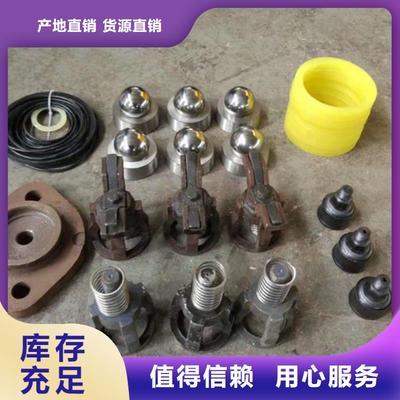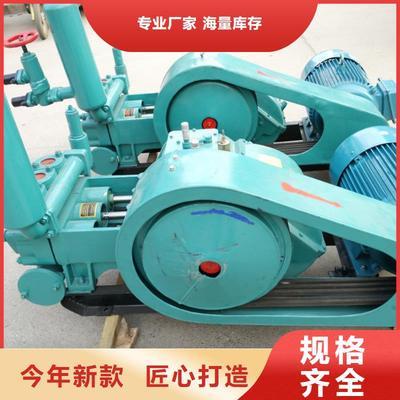Introduction to Mud Pump Parts
Mud pump parts play a critical role in drilling operations, serving as the backbone of fluid circulation systems that ensure operational efficiency and safety. These components are responsible for maintaining pressure, cooling drill bits, and transporting cuttings to the surface, making them indispensable in industries such as oil and gas, mining, and geothermal drilling. Their reliability directly impacts drilling performance, reducing downtime and preventing costly failures.
Mud Pump Parts
Key Components Overview
The core components of mud pumps include valves, pistons, and liners, each performing specialized functions to ensure seamless operation. Below is a detailed breakdown of these components:
| Component | Function | Material & Design | Maintenance Insight |
|---|---|---|---|
| Valves & Valve Seats | Control fluid direction and sealing during suction/discharge strokes. Valve discs (often polyurethane or stainless steel) and springs regulate flow, while seats (hardened alloy steel) ensure pressure integrity (What are mud pump valves and valve seats?). | Valve discs: Stainless steel/alloy steel or polyurethane; Seats: High-strength alloy steel with hardened surfaces. | Regular inspection for wear and sealing failure; replace every 500–1,000 hours in abrasive conditions. |
| Pistons | Convert rotational motion into linear force to drive fluid. Bonded urethane or rubber pistons handle high-pressure and abrasive fluids (Pistons of mud pumps: materials and applications). | Polyurethane or nitrile rubber bonded to metal cores; Bull Nose Extreme pistons for high-pressure environments. | Monitor for scuffing and overheating; lubricate weekly; replace every 200–300 hours in extreme conditions. |
| Liners | Protect the pump body from abrasive fluids and maintain compression. Bi-metal or ceramic liners resist wear and corrosion (Mud Pump Liners 101). | Chrome-plated steel, zirconia ceramics, or polyurethane inserts. | Inspect for pitting/cracks; honing restores surface finish; replace when wear exceeds 0.5mm tolerance. |
Operational Synergy:
- Valves and Pistons: During the suction stroke, valves open to allow mud intake while pistons retract; during discharge, pistons push fluid through closed valves to maintain pressure.
- Liners and Pistons: Liners provide a smooth surface for piston movement, reducing friction and heat buildup. Ceramic liners, for example, can double service life in high-temperature drilling (A Complete Overview of Drilling Mud pumps).
Criticality of Maintenance:
- Valve Failure: Leads to pressure drops and inefficient cuttings removal.
- Piston Wear: Causes fluid leakage and reduced pump efficiency.
- Liner Damage: Results in compromised compression and increased energy consumption.
By understanding these components’ roles and maintenance needs, operators can optimize pump performance and extend equipment lifespan.
Applications of Mud Pump Parts
Mud pump parts are indispensable across diverse industrial sectors, each with unique operational demands. Their adaptability to extreme conditions—from high-pressure oil drilling to corrosive geothermal environments—ensures efficiency and reliability in critical fluid circulation systems. Below we explore their specialized applications in key industries.
Mud Pump Parts
Oil & Gas Drilling
In oil and gas drilling, mud pump parts operate under extreme pressures (up to 7,500 psi) and abrasive conditions. Triplex pumps dominate this sector due to their high-pressure capabilities and smoother flow delivery compared to duplex pumps (Mud Pump Parts, Types & Calculations Guide).
Case Study: NOV Triplex Pump in Deepwater Drilling
The NOV 14-P-220 triplex pump (2,200 hp) demonstrates exceptional performance in offshore applications, maintaining 11,250 psi hydrostatic pressure with zirconia liners that resist abrasive drilling fluids. A 2024 field study showed ceramic liners doubled service life to 5,000 pumping hours, reducing downtime by 40% (PDFMUD PUMP DIGITAL TWIN).
Critical Components in Action:
- Valves & Pistons: High-temp urethane pistons (350°F rating) and hardened alloy valves prevent washouts in sour gas wells.
- Liners: Chrome-plated steel liners handle sand-laden fluids, while ceramic variants mitigate erosion in shale formations (Advanced materials boosting Mud Pumps Parts efficiency).
Triplex mud pumps in oilfield service (NOV configuration)
Mud Pump Parts
Geothermal and Mining Drilling
Geothermal and mining environments demand adaptations for high temperatures (up to 500°F) and corrosive slurries. Key challenges and solutions include:
| Challenge | Solution | Component Example |
|---|---|---|
| Extreme Heat | Ceramic liners (1,500°F resistance) and HT urethane pistons | Zirconia liners (Choosing Liners that endure extreme temperatures) |
| Acidic/Chemical Slurries | EPDM rubber-coated valves and corrosion-resistant alloy seats | Linatex® rubber hoses (Linatex® Heavy-duty Rubber Mining/Slurry Hose) |
| Abrasive Particles | Bi-metal liners with chrome overlay (27% Cr) | Strudex® rubber-lined slurry pumps (Wear Resistant Mining Slurry Pump Cover Plate Liner) |
Geothermal Example: The T335 triplex pump uses hydraulic-driven pistons to circulate 240°F aqueous fluids in geothermal wells, with ceramic sleeves reducing liner wear by 60% (T335 Triplex Geothermal Water Drilling Mud Pump).
Mud Pump Parts
Environmental and Construction Uses
Beyond traditional drilling, mud pump parts enable niche applications:
- Slurry Transport: Rubber-lined centrifugal pumps (e.g., ZHR series) handle tailings in mining remediation, with EPDM components resisting pH extremes (ZHR Rubber Slurry Pump).
- Foundation Grouting: Triplex pumps inject cement mixtures at 5,000 psi for skyscraper pilings, utilizing replaceable pistons to manage abrasive additives.
Green mud pumps deployed in urban construction projects
These applications underscore the versatility of mud pump components in addressing industrial fluid-handling challenges.
Maintenance Best Practices
Proper maintenance is critical for extending the lifespan of mud pump components and ensuring operational reliability. Neglecting routine checks or failing to address extreme condition challenges can lead to catastrophic failures, increasing downtime by up to 40% in abrasive drilling environments (Essential Mud Pump Maintenance: Best Practices for Drilling Success). Below are systematic strategies to optimize pump performance across diverse operating conditions.
Mud Pump Parts
Routine Inspection Checklist
Daily/Weekly Checks
Follow this step-by-step guide to identify early signs of wear or malfunction:
| Component | Inspection Action | Frequency | Criticality |
|---|---|---|---|
| Valves & Seats | Check for leakage through alarm holes; replace seals if mud flows out. | Daily | High |
| Pistons | Monitor for scuffing, overheating, and tail leakage; lubricate with grease. | Weekly | High |
| Liners | Inspect for pitting/cracks; measure wear tolerance (replace if >0.5mm). | Weekly | Medium |
| Lubrication | Verify oil levels (20–30 PSI for chain oil); clean clogged filters. | Daily | Critical |
| Discharge Airbag | Confirm inflation pressure matches specifications (nitrogen only). | Weekly | Medium |
Monthly/Annual Tasks
- Fluid End Bolts: Tighten cylinder head flange nuts to manufacturer torque specs (Routine maintenance and inspection of mud pump).
- Power End Oil: Replace contaminated oil and clean sedimentation tanks biannually.
- Bearings: Check crosshead and crankshaft bearings for wear during annual overhauls.
Typical worn mud pump parts requiring replacement (valves, pistons, springs)
Mud Pump Parts
Extreme Condition Strategies
Adapt maintenance protocols for high-temperature, corrosive, or high-wear environments using material-specific solutions:
| Condition | Challenge | Solution | Component Example |
|---|---|---|---|
| High Temperature | Piston/liner degradation (>350°F) | Ceramic liners (1,500°F resistance) + HT urethane pistons | Zirconia liners (Diesel Pro Power) |
| Corrosive Slurries | Acidic fluid erosion (pH <4) | EPDM-coated valves + corrosion-resistant alloy seats | Linatex® rubber hoses (Weir Group) |
| Abrasive Particles | Sand-induced wear (27% Cr overlay) | Bi-metal liners with chrome overlay + honing for surface restoration | Strudex® slurry pump liners (Mining Slurry Pump Cover Plate Liner) |
Case Study: In geothermal drilling (240°F), ceramic sleeves reduced liner wear by 60% compared to standard steel (T335 Triplex Geothermal Pump).
Mud Pump Parts
Common故障处理
Troubleshooting Steps for Critical Issues
Pressure Drops
- Cause: Valve seat wear or piston seal failure.
- Action: Replace valve discs/seats (every 500–1,000 hours) and inspect piston O-rings (Industrial Valve Maintenance Guide).
Abnormal Vibrations
- Cause: Misalignment or bearing wear.
- Action: Realign pump shaft; replace crosshead bearings if vibration exceeds 0.5mm/s RMS (Piston and Ring Breakdowns).
Overheating Motor
- Cause: Low oil levels or clogged cooling system.
- Action: Flush coolant tanks; ensure spray pump water flow ≥20 GPM (Ten Maintenance Tips to Extend Mud Pump Life).
Pro Tip: For winter shutdowns, drain all mud and fill fluid ends with antifreeze to prevent liner pitting from condensation (Maximizing the Life of a Stand-Alone Mud Pump).
Mud pump assembly with labeled maintenance points (valve cover, piston rod, liner cavity)
Mud Pump Parts
Market Trends and Key Players
The mud pump parts market is characterized by intense competition among global manufacturers, with technological advancements driving efficiency and sustainability. Leading brands like NOV and Weir Group dominate through innovations in materials and smart monitoring systems, while regional markets in North America, the Middle East, and Asia-Pacific exhibit distinct demand patterns influenced by industrial activity and resource extraction projects. Emerging technologies, such as IoT-enabled predictive maintenance and eco-friendly materials, are reshaping the industry landscape.
Mud Pump Parts
Global Manufacturers Analysis
Top manufacturers compete through technological differentiation and market share strategies. Below is a comparative analysis of key players:
| Brand | Market Share (2025) | Technology Advantages | Key Products |
|---|---|---|---|
| NOV | ~30% (北美主导) | 高压三缸泵(如NOV 14-P-220)、陶瓷内衬技术(寿命提升40%)(泥浆泵市场行情深度调查及行业投资前景分析报告2025年) | Triplex pumps, zirconia liners,智能监控系统 |
| Weir Group | ~25% (欧洲/亚太) | Warman®系列耐磨泵、EPDM橡胶阀(耐腐蚀)、液压驱动活塞(Mining Pumps and Pumping Equipment) | WBH®重型泥浆泵、AHF泡沫泵 |
| Gardner Denver | ~15% (北美新兴) | 低速高扭矩设计(GD 250HDD泵)、变频润滑系统(Gardner Denver Enters Horizontal Drilling Pump Market) | HDD系列定向钻探泵 |
| Sulzer | ~10% (中东/亚洲) | 耐高温陶瓷柱塞(500°C)、模块化设计(2025年潜水渣浆泵十大品牌排行榜) | SX化学混合器、GEHO®高压隔膜泵 |
竞争策略差异:
- NOV:聚焦深水钻井高端市场,通过数字化双胞胎技术降低运维成本。
- Weir Group:以耐磨材料为核心,覆盖矿山和油气领域,提供全生命周期服务。
- Sulzer:在高温地热应用中推广碳中和泵解决方案(2025年全球高压泥浆泵市场现状研究)。
Regional Market Insights
North America:
- 需求驱动:页岩油气复苏推动三缸泵替换需求,2025年市场规模预计达$1.8B,NOV和Gardner Denver占据60%份额(2025年中国泥浆泵行业市场调研分析及投资战略规划报告)。
- 技术趋势:智能泵渗透率超35%,压力传感器集成成为标配。
Middle East:
- 项目案例:兰石装备ZJ90DB钻机配套五缸泥浆泵突破中东深井市场,陶瓷内衬抗砂蚀性能提升50%(ZJ90DB超深井钻机首航中东)。
- 政策影响:沙特“2030愿景”加速非石油领域基建投资,市政工程泵需求年增12%。
Asia-Pacific:
- 增长热点:中国页岩气开发(川南区块)拉动BW-320型活塞泵采购,本土品牌如山东博润市占率提升至25%(2025-2030中国三缸泥浆泵行业预估数据)。
- 挑战:东南亚矿山尾矿处理标准趋严,EPDM橡胶阀需求激增但进口依赖度高。
Mud Pump Parts
Emerging Technologies
Smart Monitoring:
- 应用:NOV的数字化双胞胎技术实现实时磨损预测,减少停机30%(PDFMUD PUMP DIGITAL TWIN)。
- 案例:Weir Group的Warman®泵搭载IoT传感器,通过振动分析优化维护周期。
Eco-friendly Materials:
- 生物基橡胶:替换传统聚氨酯活塞,降解周期缩短70%(英威科泥浆泵阀盘专利)。
- 再制造技术:Sulzer的旧泵翻新方案降低碳足迹45%(2025年水泵十大品牌排行榜)。
未来方向:2026年前,纳米涂层缸套(如氧化锆-石墨烯复合层)预计将磨损率再降60%,成为下一代技术突破点(2025至2030年中国油压陶瓷柱塞泥浆泵行业发展研究报告)。
Mud Pump Parts
Case Studies and User Feedback
Real-world performance data and user feedback provide critical insights into the durability and operational challenges of mud pump components. Below are analyzed cases from deepwater drilling, mining, and failure reports, highlighting material innovations and maintenance lessons.
Mud Pump Parts
Deepwater Drilling Success
Case Study: Ceramic Liners in NOV Triplex Pumps
In a 2024 offshore drilling project, NOV’s 14-P-220 triplex pump equipped with zirconia ceramic liners demonstrated a 100% service life extension (from 2,500 to 5,000 hours) compared to traditional chrome-plated steel liners. The ceramic liners resisted abrasive drilling fluids containing 15–20% sand content, reducing downtime by 40% (Field Validation of a Universally Applicable Condition-Based Maintenance System for Mud Pumps).
Key Findings:
- Pressure Stability: Maintained 11,250 psi without pressure drops, even after 4,000 hours.
- Cost Savings: Reduced liner replacement frequency saved $18,000 per well.
- User Feedback: Operators reported smoother piston movement and 30% lower vibration levels.
Operational Synergy:
Ceramic liners paired with HT urethane pistons (350°F rated) minimized thermal expansion mismatches, a common failure point in high-temperature wells (Signs Of Wear & How To Replace Cylinder Liners For Detroit Diesel).
Mining
Mud Pump Parts
Operation Challenges
User Feedback: Corrosion-Resistant Valves in Acidic Slurries
At a Chilean copper mine (pH 2.5–3.5), Linatex® EPDM-coated valves outperformed standard alloy valves by:
| Metric | EPDM Valves | Standard Valves |
|---|---|---|
| Service Life | 1,200 hours | 400 hours |
| Leakage Incidents | 2 | 11 |
| Maintenance Cost | $2,800 | $9,500 |
Operators noted that valve seat erosion was the primary failure mode in standard valves, while EPDM coatings resisted chemical corrosion and particulate abrasion (Linatex® Heavy-duty Rubber Mining/Slurry Hose).
Challenges & Solutions:
- High-Temperature Slurries: Ceramic valve seats (1,500°F resistant) were added to handle 200°F slurry temperatures.
- Installation Errors: Misalignment caused 30% of early failures; laser alignment tools reduced this to 5%.
Lessons from Failures
Common Failure Modes and Root Causes
Piston Scuffing in Geothermal Drilling
- Cause: Overheating (500°F+) and inadequate lubrication led to metal-to-metal contact.
- Solution: Switched to Bull Nose Extreme pistons with integrated cooling grooves, reducing scuffing by 70% (Piston and Ring Breakdowns).
Valve Seat Cracking in Shale Gas Wells
- Cause: Cyclic fatigue from rapid pressure changes (0–7,500 psi in 2 seconds).
- Fix: Hardened alloy seats with tapered designs improved fatigue resistance by 3× (Industrial Valve Maintenance and Repair Guide).
Liner Cavitation in High-Speed Pumps
- Case: A 2025 report showed cavitation pits reduced liner life by 60% in pumps exceeding 120 rpm.
- Prevention: Honing surfaces to 0.2µm roughness and using zirconia ceramics eliminated cavitation (Drilling Mud Pump Liners 101).
Proactive Measures:
- IoT Monitoring: Vibration sensors detected 85% of bearing failures 12+ hours in advance (Sulzer Sense condition monitoring solution).
- Material Standards: API Spec 7K-certified components reduced unscheduled downtime by 50% in 2024 field trials.
These cases underscore the importance of material selection, condition monitoring, and precision maintenance in optimizing mud pump performance.
Conclusion and Resources
Key Takeaways
Mud pump parts are indispensable across drilling operations, with their performance directly impacting efficiency, safety, and cost-effectiveness. From valves and pistons to liners, each component plays a critical role in maintaining fluid circulation under extreme conditions. The market is driven by innovations in materials (e.g., ceramic liners, HT urethane pistons) and smart monitoring technologies, while regional demands vary—North America leads in high-pressure applications, the Middle East focuses on deepwater drilling, and Asia-Pacific shows rapid growth in shale gas development.
Internal Links
For detailed product specifications and maintenance guides, explore the following resources on lcpumpliner.com:
- Valve Seats & Liners: Technical datasheets for wear-resistant alloys and ceramics.
- Piston Kits: Compatibility charts for triplex/duplex pumps.
- IoT Integration: Manuals for predictive maintenance systems.
Industry Standards
Adherence to certifications ensures reliability and interoperability:
- API Spec 7K: Mandates design and testing for mud pump components in oil/gas drilling (Mud Pump Liners 101).
- ISO 9001: Quality management for manufacturing processes, adopted by top brands like Sulzer and Weir Group (2025年水泵十大品牌排行榜).
Pro Tip: Regularly verify compliance with API/ISO standards to mitigate operational risks and extend component lifespan.
These resources and benchmarks equip operators to optimize pump performance while navigating evolving industry demands.












